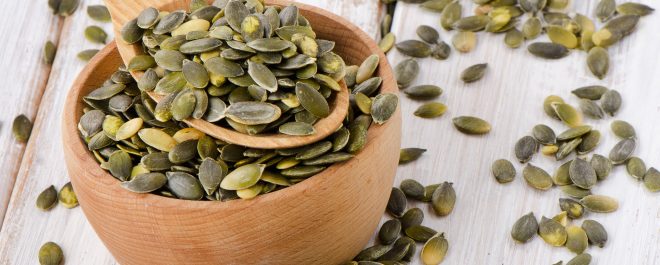
Clinic News
With spring having sprung early there is that temptation to get into the garden... read on for some top tips to keep it a flourishing venture.
This month we say goodbye to Wendy who has been a great member of the team keeping you all going while Jenny has been away on her maternity leave. We will be sorry to see her go but maybe she will come back again one day. We would like you to join us in thanking her for all the care she has given during the last nine months.
Alex has had another busy month as her new role as Specialist Chair of the pregnancy and paediatric faculty for the Royal College of Chiropractors- her first engagement was at the McTimoney Chiropractic College in Abingdon Oxford, where she presented the benefit of the faculty along with other faculty chairs to final year students at the college. McTimoney is a variation of the original chiropractic technique.
Does she ever stop working? - Not very often, so another weekend away from the family to help mentor colleagues in the art of Sacro Occipital Technique in Heathrow London. During their AGM she was presented with a pin badge signifying 25 years practicing as a SOT chiropractor.
We have been granted permission by QMC to access x-rays and images of patients online to help support their care. So if you have had some imaging recently in relation to your problem please let your chiropractor know and they can now access that information.

Spring Time Can Bring Pain
Spring is desperately trying to emerge in our gardens, grass needs mowing, trees need pruning but, this can lead to aches and pains and even injury unless you take precautions.
People suffer from aches and pains when they undertake what seems to be relatively harmless activity such as gardening. The problem is that the actions required are quite different from what you have been doing for the last few months?? Nothing maybe?
The main causes are prolonged stretching and overuse of the ligaments and joints in the spine. Digging, mowing and stooping place considerable stress on the ligaments and joints in the lower lumbar spine and cause them to become inflamed and tender. This will trigger a protective muscle spasm which gives rise to the deeper, duller, achy type of pain that occurs over the following few days.
This happens year after year. It is very important to look after your muscles and joints, especially when undertaking a form of exercise that you are not used to. If you want to stop gardening aches and pains and be able to appreciate all the hard work the next day, then follow these top ten tips:
- Wear light, but warm clothes & make sure your lower back is always covered
- Kneel on one leg rather than bending your back repeatedly
- Use long handled tools to prune tall plants
- Use only a small spade/fork for digging and keep your back gently hollowed
- Do not always work to one side only, vary your position
- Don’t do the same work for long periods, vary your tasks
- Keep your back straight when carrying
- Gently stretch your muscles and ligaments for a few minutes after gardening
- When finished have a warm bath or shower
- Do not sit for too long in your favourite armchair afterwards, but stand up regularly and walk around for a few minutes each time.

Spring Time Sports
If the arrival of sunshine has caused you to pack away your winter jumpers and, instead, pull out your racket, shin pads or helmet for a bout of activities, remember to take note of these simple steps to ensure you steer clear of any unwanted pain and discomfort.
RUNNERS can avoid injury by regular stretching of the tendons and wearing good shoes with shock-absorbing features.
RACKET-SPORTS PLAYERS should be wary of playing through the pain of Tennis Elbow. Tennis Elbow is in fact an overuse injury, caused by repetitive movements at the wrist forcing the thumb outwards and the palm upwards. Continuing to play will only exacerbate the problem.
GOLFERS are particularly prone to lower back injuries. Graphite clubs and soft spiked shoes will help absorb the shock which can bring on back injury. Your chiropractor can suggest appropriate warm-ups and exercises, and help you work on an alternative swing.
GARDENERS commonly suffer from aches and pains, but they can avoid lower back trouble by kneeling on one leg rather than bending from the hips, keeping the back hollow whilst digging, and varying tasks throughout the day to avoid repetition injury.
DIY, like gardening, is often far-removed from everyday activities. When the sun is shining many will want to get out in the garden and get on with the long list of DIY jobs that have piled up over the winter months. Enthusiasts often injure their back by in habitual exertion, so when lifting, take the weight on bent legs, keeping the back straight.

Foods can help relieve pain
Here are some of our top nutrition tips for managing pain.
- Ditch the processed foods - yes we keep reminding you....
Processed foods generally refers to most things that come in a packet with a list of ingredients: from biscuits to ready meals to breakfast cereals. They often contain little in the way of naturally occurring vitamins and minerals. They may worsen inflammation and pain because they contain higher levels of unhealthy fats – in particular, processed omega-6 fats and ‘trans’ fats, which have pro-inflammatory properties. They often contain quickly absorbed sugars or refined carbohydrates too, which may exacerbate inflammation when consumed in excess.
In contrast, ‘real’ foods are as close as possible to how they are found in nature. They can include whole vegetables and fruit, nuts and seeds, whole grains, fish, eggs and meat (whole cuts, not ‘deli’ or processed meats). These foods naturally contain higher levels of nutrients that can help reduce inflammation and pain, such as those we’re going to look at in more detail below.
- Eat magnesium-rich foods
One of the nutrients that may help to manage pain and inflammation is magnesium. Magnesium helps our muscles to work normally, including helping them to relax, which in turn helps to avoid or relieve muscle tension that can contribute to pain. This mineral is also important for the nerves.
Magnesium is found primarily in whole unprocessed plant foods – especially green leafy vegetables such as spinach and kale, seeds and nuts, and whole grains including rye and buckwheat.
- Include oily fish
Oily fish such as mackerel, salmon, sardines, herring and anchovies are high in omega-3 fats. These fats have anti-inflammatory properties and therefore may help to manage pain. The specific omega-3s in fish (EPA and DHA) can be more beneficial than the types of omega-3 found in seeds such as flax seeds.
Aim to eat a serving of oily fish around three times a week. These can include tinned sardines and salmon as long as they do not contain added vegetable oils (olive oil is fine). Note that ‘omega-3 fish fingers’ are not a good source of omega-3 fats – stick to the real thing!
- Get plenty of vitamin C
You may know vitamin C for its role in the immune system. But in fact the primary role of vitamin C is in making collagen – a protein that forms the basic structure of most of the body’s tissues, including the bones, joints and muscles. If your body can’t make collagen properly, these tissues will lose strength and function, contributing to not only day-to-day pain but also potentially painful conditions such as arthritis and osteoporosis.
Eating a variety of vegetables and fruit is the best way to get enough vitamin C. Although ‘five-a-day’ is the well-known recommendation, we should be aiming for at least seven portions a day, primarily of vegetables, in order to get good amounts of vitamin C and antioxidants. Some of the best sources of vitamin C include peppers, kale, broccoli, kiwi fruits, Brussels sprouts, watercress and red cabbage. If you can, get your veg and fruit from a local producer (e.g. a farmer’s market) as it can lose its vitamin C when it’s stored or transported for long periods of time.
- Include anti-inflammatory spices
The spices ginger and turmeric in particular can have anti-inflammatory and pain-relieving properties. Use fresh ginger and powdered turmeric in your cooking whenever you can, make fresh ginger tea with a grated thumb-sized piece of ginger. If you have a good vegetable juicer you can even make fresh ginger juice to sip on – but watch out, it’s strong!
- Try avoiding nightshades
The ‘nightshade’ or solanaceae vegetables may worsen inflammation and pain for some people. These are aubergines, tomatoes, potatoes (not sweet potatoes), and peppers – including chillies and all types of chilli powder (cayenne, paprika etc.). If you’ve implemented the other changes for at least three months and not noticed a significant improvement in your pain, then try eliminating the nightshade vegetables.
- Consider eliminating gluten
Gluten is a protein that’s found primarily in wheat, barley and rye. The most severe reaction to gluten is coeliac disease, where the sufferer has to avoid gluten for the rest of their life. But some people who do not have coeliac disease may also react to gluten in a less severe way, which can contribute to inflammation in the body. If you’re cutting out gluten it can be best to work with a nutrition practitioner (e.g. a nutritional therapist) for support to make sure you’re not missing out on any nutrients.

Arthritis Also Attacks Adolescents
Arthritis has always been perceived as a problem only for older people, but some 30% of the 8 million sufferers in the UK are under the age of 25.
Making sure that your diet contains certain food groups can be a powerful natural weapon in the continuing battle for pain relief. Arthritis doesn’t have to be a life sentence. The following lifestyle and dietary table is for guidance only and arthritis sufferers willing to change their diet should do so very gradually, after discussion with their GP, and ensure that all food groups are adequately replaced.
TRY TO AVOID
- Nightshade foods – e.g tomatoes, peppers, eggplant, white potato and margarine
- Dairy products including chocolate
- Dry roasted nuts
- Alcohol (wine), soft drinks and caffeine
- Additives, preservatives and chemicals
- Sedentary lifestyle
- Sulphur and methionine containing foods – e.g. cabbage, brussel sprouts, garlic and onions
REPLACE WITH
- Moderate amount of meat
- Oily fish such as salmon, mackerel, sardines and tuna for Omega 3
- fruits and vegetables, e.g. lettuce, peas, cabbage, apples
- Complex carbohydrates, e.g. brown rice, wholegrain pasta and wholegrain bread
- Vinegar and hot spices
- Dietary fibre
- Nuts such as almonds, brazil nuts and hazelnuts
- Water – try to drink a minimum of eight glasses a day
Plus gentle daily exercises, stretches and walks.
We treat all conditions that affect any muscle or joint in your body, from your head to your little toe! One of the most common complaints that we treat is back pain and Chiropractic is recommended by the government authority, the National Institute for Clinical Excellence (NICE) for acute and chronic back pain. Some of the other conditions that we treat are neck and headache, shoulder pain, leg and hip pain, knee and foot pain, sciatica and arthritis. Our registered Chiropractors all have at least five years of training. Treatment costs can be covered through most health insurers. If you are in any doubt, we are always very happy to talk with you on the phone to see if your condition will respond well to Chiropractic treatment. Call the clinic now to arrange an appointment time that works for you. 0115 9225085 If you would like to opt-out of receiving these newsletters please follow the unsubscribe link below, email alex@beestonchiropractic.co.uk or let us know at your next appointment.





